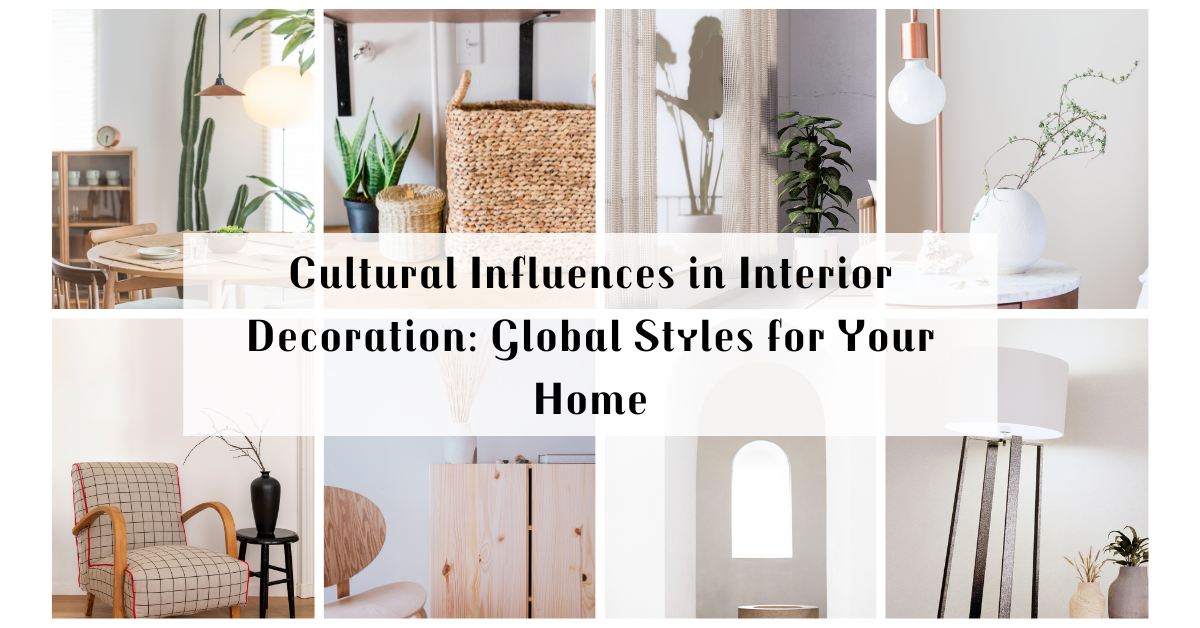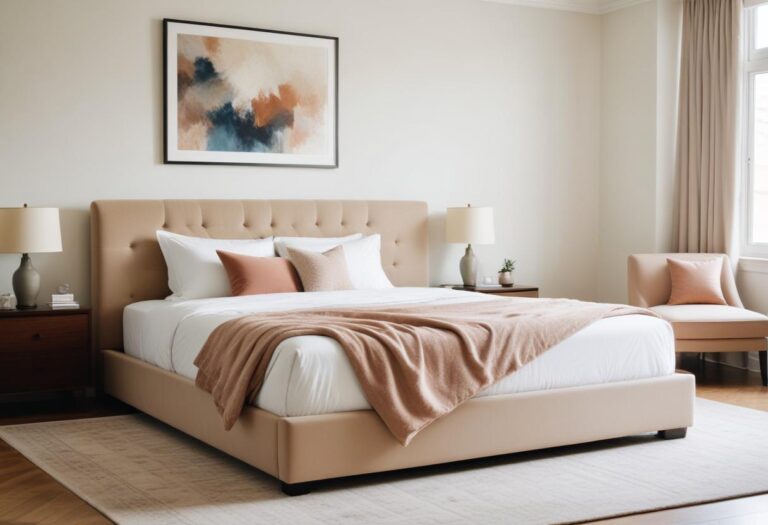In today’s interconnected world, cultural influences have a profound impact on interior decoration. Integrating global styles into home design not only enriches the aesthetic appeal but also adds a layer of personal significance and narrative to living spaces. Interior Decorators and Interior Designers play a pivotal role in blending these diverse elements seamlessly, creating homes that are both beautiful and culturally resonant. Here’s how global styles can inspire your home decoration.
Embracing Cultural Diversity
The essence of culturally influenced interior decoration lies in its ability to reflect the unique characteristics of various regions around the world. From the minimalist serenity of Japanese design to the vibrant hues of Moroccan interiors, each style offers distinct elements that can be adapted to modern homes.
Japanese Zen
Japanese interior design, known for its simplicity and minimalism, emphasizes natural materials and a strong connection with nature. Key elements include:
– Natural Materials: Use of wood, bamboo, and stone to create a calm and organic feel.
– Neutral Colors: A palette of whites, beiges, and browns to maintain tranquility.
– Low Furniture: Traditional tatami mats and low wooden tables enhance the minimalist aesthetic.
Interior Designers often incorporate these elements to create serene and clutter-free environments, perfect for relaxation and mindfulness.
Moroccan Vibes
Moroccan interior design is known for its bold colors, intricate patterns, and luxurious textiles. Key features include:
– Vibrant Colors: Rich hues of blue, red, and gold dominate Moroccan interiors.
– Mosaic Tiles: Intricately patterned tiles are used for floors, walls, and tabletops.
– Textiles: Luxurious fabrics such as silk and wool are used in rugs, cushions, and draperies.
Interior Decorators use these vibrant elements to infuse homes with warmth and a sense of exotic luxury.
Scandinavian Simplicity
Scandinavian design is characterized by its simplicity, functionality, and connection to nature. Key aspects include:
– Light Colors: Predominantly white and light neutrals to maximize natural light.
– Clean Lines: Simple and functional furniture with sleek designs.
– Natural Textures: Use of wood, leather, and wool to add warmth and texture.
Interior Designers in Chennai often employ Scandinavian elements to create bright, airy, and functional living spaces.
Bohemian Eclecticism
Bohemian interior design embraces a free-spirited, eclectic approach, combining diverse elements from various cultures. Key features include:
– Rich Textiles: Layered fabrics with bold patterns and textures.
– Vintage Furniture: Mix of antique and contemporary pieces.
– Personal Artifacts: Display of travel souvenirs, handcrafted items, and personal collections.
Interior Decorators can help curate a Bohemian style that feels both cohesive and reflective of the homeowner’s personality and travels.
Mediterranean Warmth
Mediterranean design is inspired by the coastal regions of Spain, Greece, and Italy. It is known for its warmth, comfort, and rustic charm. Key elements include:
– Terracotta Tiles: Earthy tiles for floors and roofs.
– Wrought Iron: Decorative iron elements in furniture and fixtures.
– Natural Light: Maximization of sunlight through large windows and open spaces.
Interior Designers use these elements to create inviting and sun-drenched interiors.
Indian Opulence
Indian interior design is vibrant and full of life, characterized by rich colors, intricate patterns, and handcrafted decor. Key aspects include:
– Bold Colors: Deep reds, purples, and golds.
– Handcrafted Furniture: Intricately carved wooden pieces.
– Textiles and Patterns: Embroidered fabrics, silk cushions, and traditional rugs.
Interior Decorators integrate these elements to add a touch of exotic opulence and cultural richness.
African Inspiration
African design is known for its natural materials, earthy colors, and handcrafted artifacts. Key features include:
– Natural Materials: Use of wood, stone, and clay.
– Earthy Colors: A palette of browns, ochres, and greens.
– Tribal Art: Masks, sculptures, and textiles with traditional patterns.
Interior Designers often incorporate these elements to create spaces that feel grounded and connected to nature.
Creating a Cohesive Global Style
While incorporating elements from various cultures, it’s essential to maintain balance and cohesion. Here are some tips:
– Choose a Base Style: Start with one primary cultural influence and incorporate elements from other styles as accents.
– Color Harmony: Ensure that the color palette is consistent to avoid visual chaos.
– Edit and Curate: Be selective with decorative items to maintain a cohesive and uncluttered look.
Conclusion
Cultural influences in interior decoration provide a rich tapestry of styles and elements that can transform any home. By thoughtfully integrating global styles, Interior Designers and Interior Decorators in Chennai can create spaces that are not only visually stunning but also deeply personal and culturally resonant. Whether you’re drawn to the minimalism of Japanese design or the vibrant colors of Moroccan interiors, there’s a world of inspiration waiting to be explored. Embrace the diversity and let your home tell a story that spans the globe.















